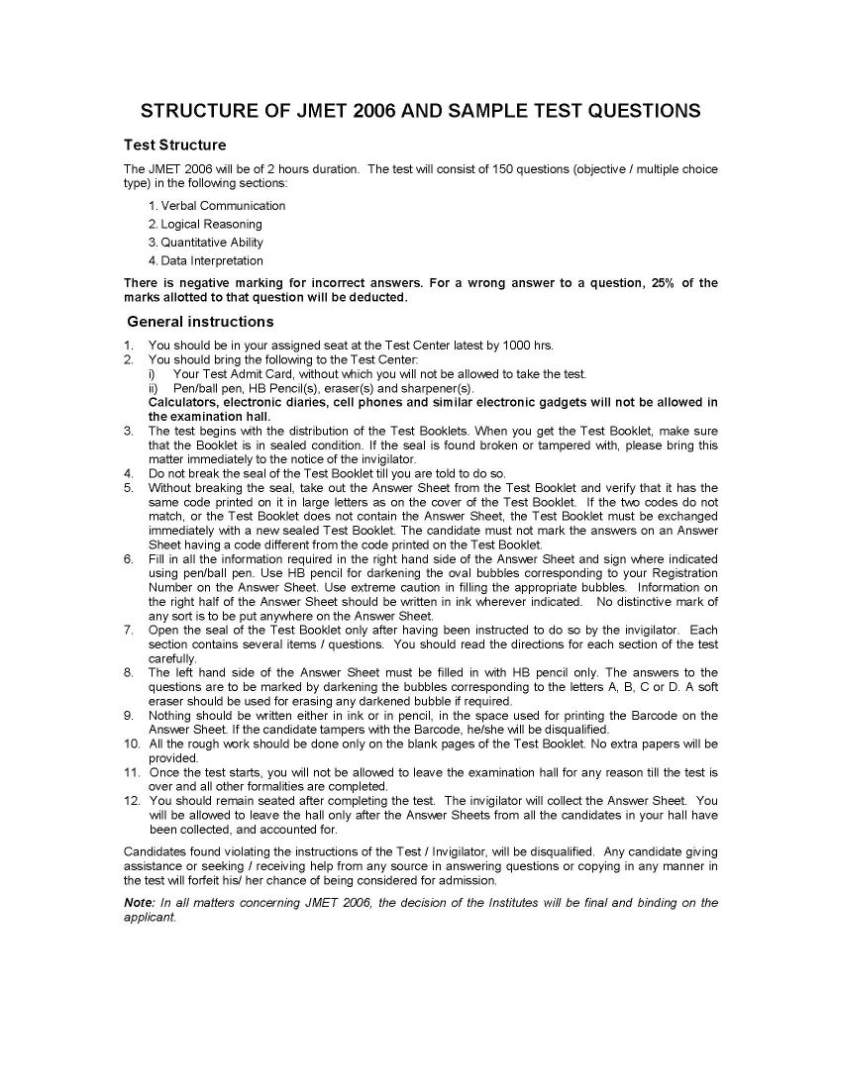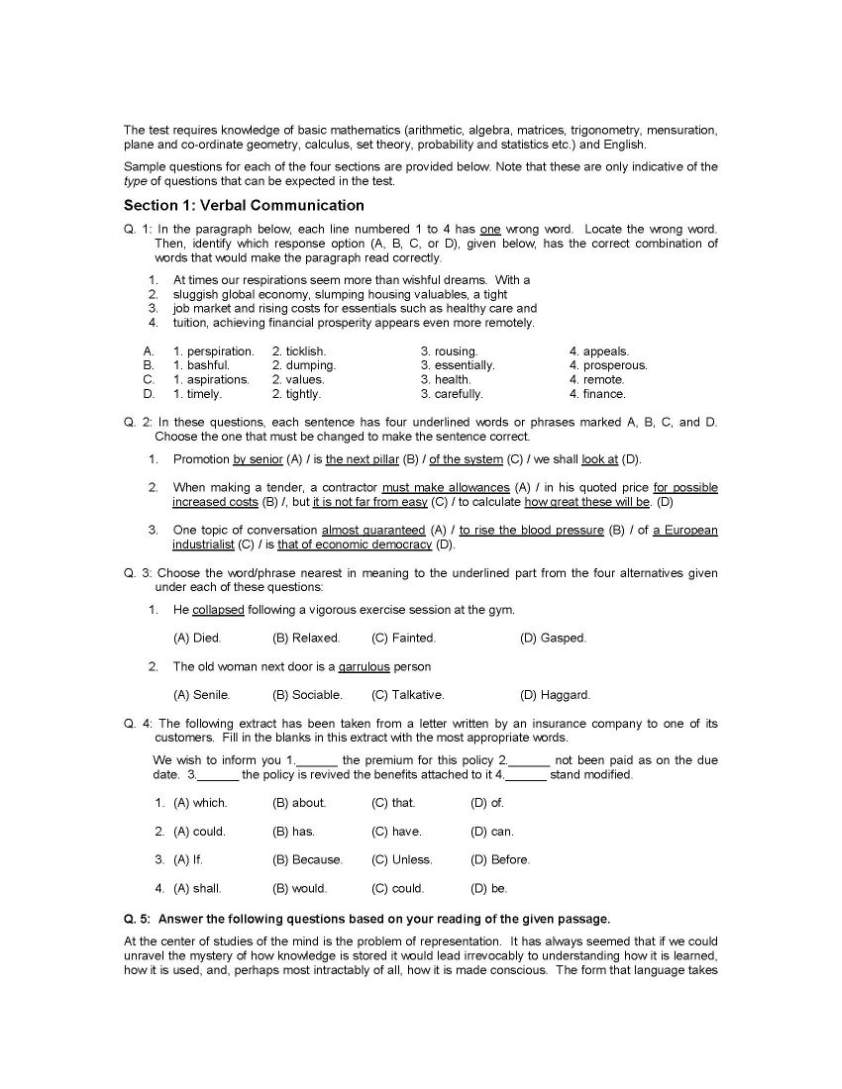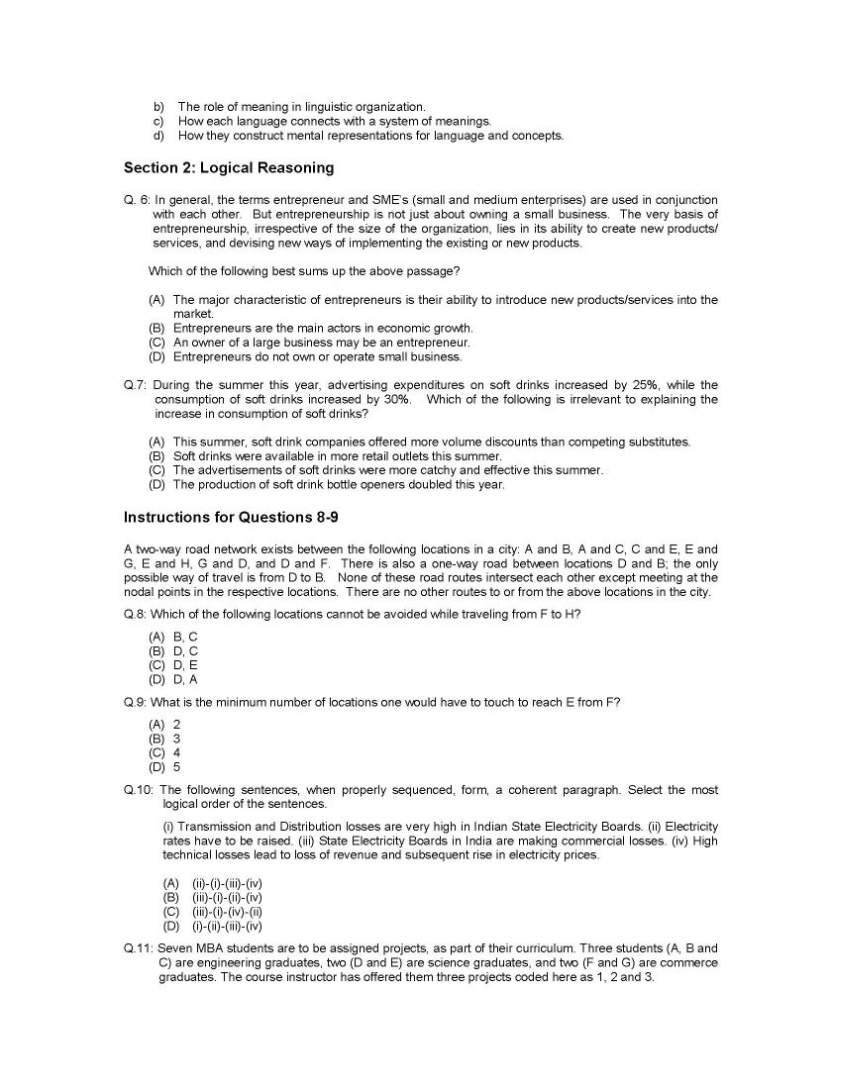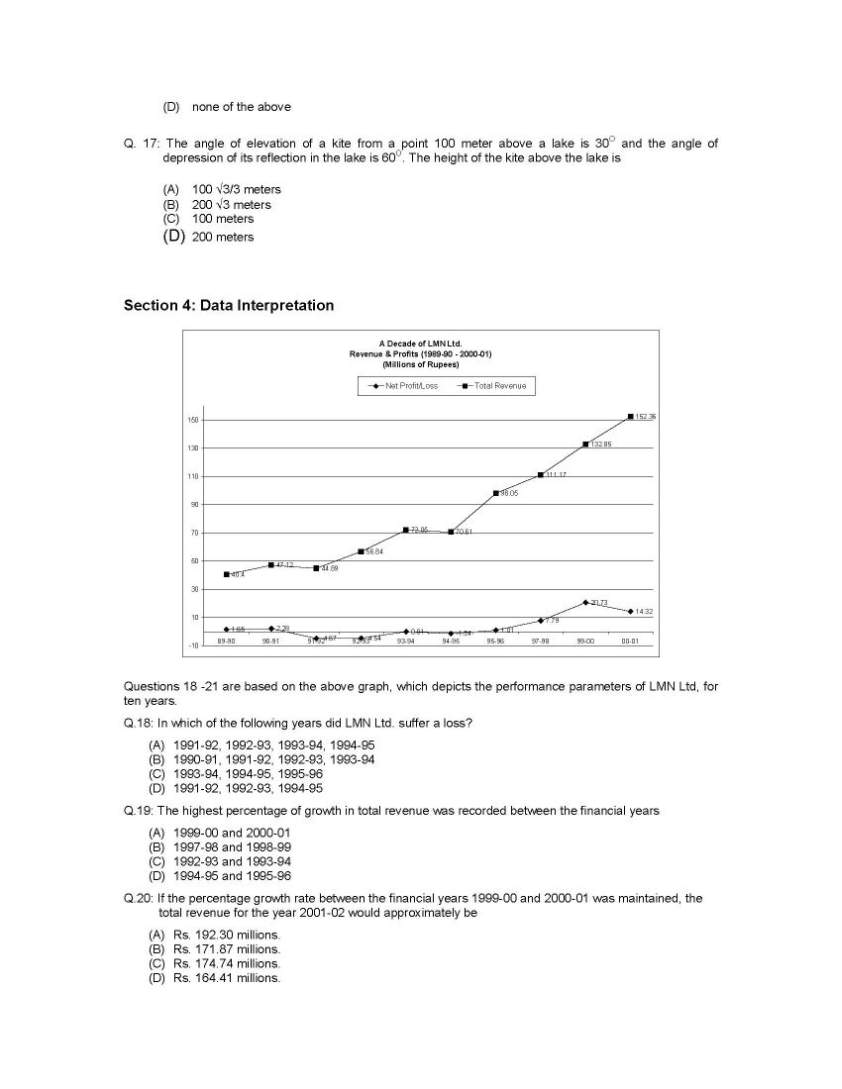| Re: JMET Exam Model Paper
As per your request here I am sharing the model question paper of JMET Exam
If the sum of the weights along the three rows, the three columns and the two diagonals are the same, how many different arrangements are possible?
1) 2
2) 4
3) 8
4) 10
If sum of the weights along the rows and columns are the same, but the sum of the weights along one diagonal is double the other, how many different arrangements are possible?
1) 6
2) 8
3) 9
4) 10
There are three similar boxes, containing (i) 6 black & 4 white balls; (ii) 3 black & 7 white balls and (iii) 5 black & 5 white balls, respectively. If you choose one of the three boxes at random and from that particular box pick up a ball at random, and find that to be black, what is the probability that the ball was picked up from the second box?
1) 3/14
2) 14/30
3) 7/30
4) 7/14
Directions for question 1 to 2:Questions are based on the following information:
Manufacturing of two automotive gear products. A and B. requires processing in both machines 1 And 2. The time required to manufacture one unit of Product A, on machine 1 and machine 2 are 2 hours and 4 hours respectively. Whereas, the time required for manufacturing one unit of Product B on machine 1 and machine 2, are 3 hours and 1 hour respectively. The total time available for machine 1 and machine 2 on a given working day are 6 hours and 8 hours respectively. There is also a constraint that at least 8 units of A and B together should be produced in a given day. Per unit profit of A and B are Rs. 5 and Rs. 7 respectively. The objective is to maximize the total amount of profit by manufacturing the two products on any given day.
1. If X and Y represent the number of A and B to be produced on a given day respectively, then the mathematical formulation for the daily profit maximization problem is given by:
1) Max profit = 5X + 7Y
2X + 3Y ≤ 6
4X + Y ≤ 8
X + Y ≥ 8
X, Y ≥ 0 and integers
2) Max profit = 5X + 7Y
6X + 8Y ≤ 2
4X + Y ≤ 3
X + Y ≥ 8
X, Y ≥ 0 and integers
3) Max profit = 5X + 7Y
2X + 4Y ≤ 6
3X + Y ≥ 8
X + Y ≥ 8
X, Y ≥ 0 and integers
4) Max profit = 5X + 7Y
2X + 3Y ≤ 6
4X + Y ≤ 8
X + Y ≤ 8
X, Y ≥ 0 and integers
2. The values of (X, Y) at which optimality is reached is:
1) (0, 8)
2) (8, 0)
3) Infeasible
4) Infinite
After purchasing four mangoes, a man commented: "well, if the price of a mango was Rs. 4 less, I would have got two more mangoes for the same amount of money I have now paid". What is the price of one mango?
1) Rs. 8
2) Rs. 10
3) Rs. 15
4) Rs. 12
If the roots of the equation 2ax2 + 2ax + 1 = 0 are real and distinct, then the number of possible integer value(s) a can take between 1 and 4 (inclusive) is:
1) 1
2) 4
3) 3
4) 2
The amount of heat flow across a metal wall is proportional to the surface area of that wall and inversely proportional to the thickness of the same wall. The heat flow is also proportional to the difference of temperatures maintained across the two sides of the wall. In a certain situation a square wall was replaced by another having sides 1½ times the previous wall and the thickness increased by 80%. To what extent should the temperature difference be changed so as to have the same heat flow?
1) 25% decrease
2) 20% decrease
3) 20% increase
4) 25% increase
Mr. Hague's total amoral gross salary, which was Rs. 10 Lakhs per year in 2007, has been reduced by 10% in 2008. In 2007 his family expenditure for food items was 40% of the total annual gross salary. The prices of average food items have increased by 5 % between 2007 and 2008. Assuming that the family consumed the same amount of food in 2008, the percentage expenditure on food items, calculated on total annual gross salary in 2008, is approximately:
1) 43%
2) 45%
3) 47%
4) 49%
A regular pyramid has a square base with side 10 cm and a vertical height of 20 cm. If the height increases by 10% of its original value and the volume is constant, the percentage change in the side of the square base with respect to its original value is approximately:
1) + 5%
2) + 10%
3) – 5%
4) – 10%
It took 15 hours and 40 minutes for Rakesh to paint four walls and the ceiling of a room of size 900 cu. ft. The ceiling height of the room is 10 ft. If Rakesh painted at a constant rate of 0.5 sq. ft per minute, how long will it take for him to paint the walls?
1) 12 hrs. 40 min
2) 11 hrs.
3) 13 hrs.
4) 1 hrs. 10 min.
Directions for question 1 to 3 The following passage pertains to next three Questions :
Consider a circular running track of radius "r". Two runners Anand and Ben are on the running track at a distance of "π r" from each other. They always run in a clockwise direction. The running track is such that the runners lose energy on one contiguous half of the track and gain energy in the other contiguous half of the track. Let both Anand and Ben have initial energy levels of "E".
1 Let the runners consume or gain unit energy per unit distance traveled. Also. let the energy consumed or gained be independent of the distance traveled thus far when the energy levels are greater than zero. The runners come to a stop when all their energy is expended. Assuming that both runners run at the same constant speed "s". After traveling a distance of "2πnr" where n is a non-negative integer, what is the difference in energy levels of Anand and Ben?
1) 0
2) πr
3) πnr
4) πnrs
2. Assume that the position of Anand on the track is chosen randomly and Ben is at a distance of "πr" from Anand. What could have been the maximum possible difference in the energy levels between them during the process of completing one full circle?
1) 0
2) πr
3) 2πr
4) πr/2
3 Anand is at the start of the half circle that boosts energy and Ben at the start of the half circle that dissipates energy. Now, if the energy lost or gained per unit distance is proportional to the distance traveled thus far, with "k" being the energy lost or gained per unit distance travelled, what is the difference in the energy levels when Anand reaches the position of Ben and vice-versa?
1) 2kπr
2) kπ2r2
3) kπ2r2/2
4) kπr/2
A father runs after his son, who is 1000 meters ahead. The father runs at a speed of 1 kilometer every 8 minutes, and the son runs at a speed of 1 kilometer every 12 minutes. How much distance has the son covered at the point when the father overtakes him?
1) 2500 meters
2) 2000 meters
3) 1500 meters
4) 1000 meters
A man jogging inside a railway tunnel at a constant speed hears a train approaching the tunnel from behind at a speed of 30 km per hour, when he is one third of the way inside the tunnel. Whether he keeps running forward or turns back, he will reach the end of the tunnel at the same time the train reaches that end. The speed at which the man is running is:
1) 6 km per hour
2) 8 km per hour
3) 12 km per hour
4) 10 km per hour
Two cities A and B, at a distance of 50 km, are connected by two separate roads. The speed of any vehicle travelling between the two cities on road 1 is 50 km per hr, while the speed on road 2 is ( 80/n) km per hr, where n is the number of vehicles (including the concerned vehicle). If you travel in a vehicle from A to B on road 1 and come back from B to A on road 2 (where there are already three vehicles plying), your approximate average speed is:
1) 26 km per hr
2) 29 km per hr
3) 32 km per hr
4) 35 km per hr
Aright circular hollow cylinder, kept vertically on its circular base has a height of 20 cm and radius of 10 cm. A sugar grain is kept inside this cylinder on its circular base at the periphery. If an ant is at the top rim of the same cylinder and diagonally opposite the sugar grain, the minimum distance the ant should travel to reach the sugar grain is approximately:
1) 82.86 cm
2) 51.43 cm
3) 37.25 cm
4) 65.96 cm
| 




